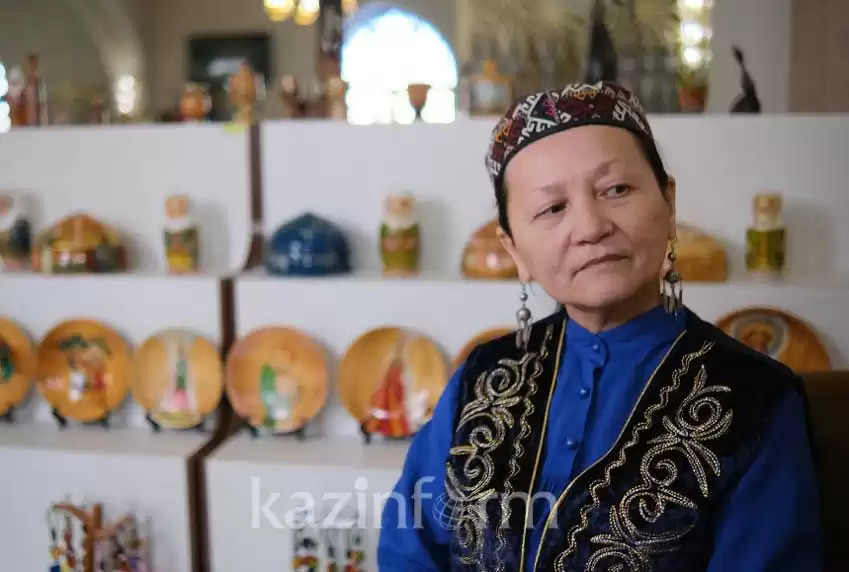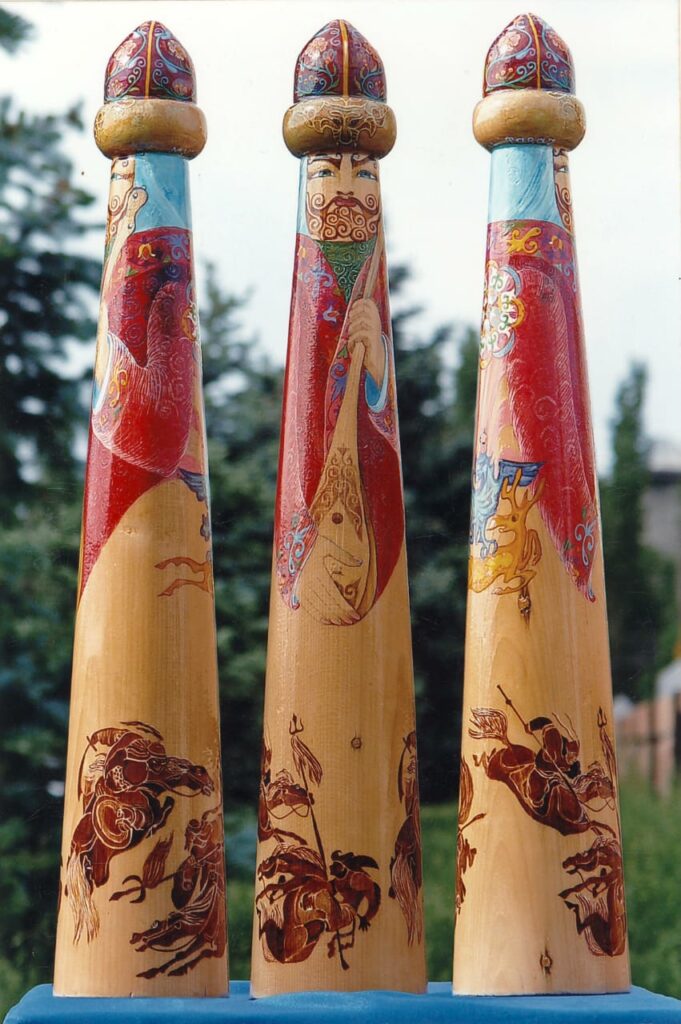ASTANA — Saule Musayeva has been making wooden dolls that depict the lifestyle and traditions of the Kazakh people for almost 30 years. Each of her works is not just a national souvenir but a carefully thought-out and reconstructed Kazakh ethnographic costume related to a certain time period and a specific region.

Saule Musayeva. Photo credit: Kazinform.
The artist from Taraz has gained fame not only in Kazakhstan but also abroad. Her artwork in the ethnic style is kept in private collections in Italy, France, the Netherlands, and Germany.
In her interview with Kazinform, Musayeva spoke about the art of ancestors, the mastery of women of the Great Steppe, as well as her life and work.
Musayeva’s works are recognizable by the ornaments that are typical for the Zhambyl Region and can be found on the 11th-century Aisha-Bibi mausoleum near the city of Taraz, which is considered the pearl of ancient architecture of Kazakhstan. Today, this ornament decorates the streets of Taraz as a symbol of the city.
From teacher to artist
Musayeva was born into a large family of eight children. She lived in Taraz and graduated from the Zhambyl Pedagogical Institute, Faculty of Art and Graphics. After graduating, she worked as an art teacher in a school and in a kindergarten but eventually realized it was not meant for her.

Wooden dolls that depict the lifestyle and traditions of the Kazakh people. Photo credit: taraztour.kz.
She lost her job when the Soviet Union collapsed. Because of her previous experience with visual arts, the artist began to explore this sphere. She noticed a lack of national souvenirs at the time, no one filled the niche.
“I began to study the history of national art after I was taught by colleagues a new technique of artistic painting on wood. When you paint a doll in the Kazakh national style, you need to study the history of the costume and the ornament. I started to spend a lot of time in libraries looking for relevant books. I couldn’t do the artwork without ensuring that it was historically accurate,” Musayeva said.
That was when she discovered that in Kazakh culture, there is a specific ornament for the floor, and the wall, and ornaments specifically for clothes, and shoes. The ornament on clothes was an indication of a person’s social status. Anyone could know what kind of person was in front of them and act accordingly.
It was possible to make an inference on how to talk to someone just by looking at a person’s clothes, taking into consideration the person’s age and status.
Kazakh yurt as the whole universe
In addition to painting wood, Musayeva creates chiy, a mat made of stalks of steppe grass, and shashaq bau, a colorful pendant used by Great Steppe ancestors as charms. Both items were considered essential items in Kazakh yurts in the past.

Wooden Kazakh yurt. Photo credit: taraztour.kz.
“The yurt is not just ropes, shanyrak (upper domed part of the yurt) and felt. It is a whole universe with functional furnishings that people have created over the centuries. The round form of the yurt is now recognized by scientists as the best form of housing for well-being, and each item in the Kazakh yurt has its own purpose and meaning tested by time,” said the artist.
“One such item is a chiy made out of steppe grass. Our inventive ancestors used this grass for both wicker and fuel. The mat, woven from the stalks of the grass, has been used in everyday life of the nomads since ancient times. This is perhaps the oldest kind of art in the Great Steppe,” she added.
The desire for beauty and harmony motivated Kazakh ancestors to decorate all the objects that surrounded them, particularly with meaning. This was usually done by women.
“When I decided to master this ancient art, I began to look for masters of chiy from whom I could learn. I find it amazing that illiterate women could create such masterpieces of decorative art in the old days,” said Musayeva.
“All the national Kazakh symbolism comes from the time of Tengrism (12-13 century). It’s good that we are returning to these sources in the modern world and using ancient knowledge. Nowadays, many people want to decorate their houses with national ornaments and elements of ancient yurt decorations,” added Musayeva.
Feeling and sharing harmony
Musayeva is committed to creating artwork. She has participated in national and international exhibitions, including the first national women’s fair of ideas and products, Empowered Woman, a festival of crafts on the Great Silk Road, in Central Asian exhibitions in Almaty, among many others.
“I’m glad I have found myself in this world, doing what I love. I am grateful to the Almighty for the opportunity to see and feel the beauty and harmony of this world – and to give it all to people,” said Musayeva.


